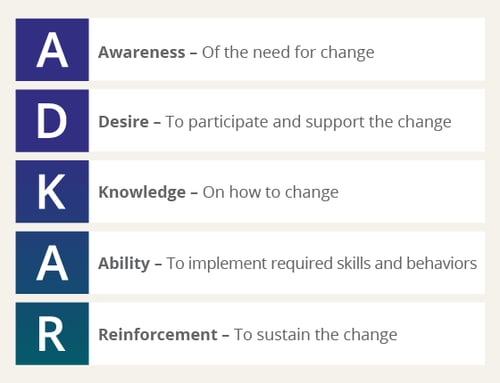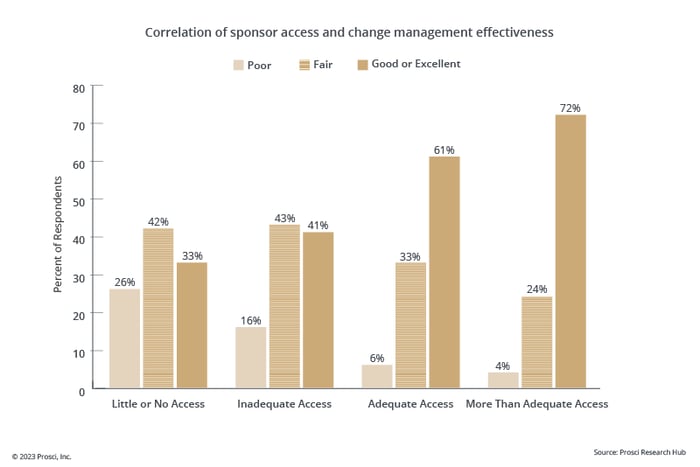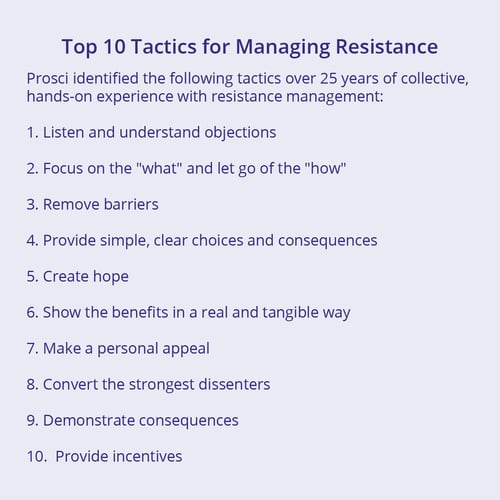How Microsoft Uses the ADKAR Model to Improve Customer Success

4 Mins
Updated: August 2, 2024
Published: October 4, 2023

Driving adoption is a critical aspect of the Customer Success Organization at Microsoft as we empower customers to achieve their desired business outcomes. When it comes to managing change, customer success teams typically use “lighter-weight” adoption frameworks in contrast to end-to-end, formal change management processes. However, sometimes supporting adoption gets complicated and these informal approaches don’t support progress. What then? That’s when we apply the Prosci ADKAR Model. Here’s how Microsoft Customer Success teams use ADKAR to influence buy-in and diagnose customer blockers.
Microsoft Customer Success and
Change Management
At most Software-as-a-Service (SaaS) organizations, customer success is an included benefit that comes with the purchase of the service. The goal is to support customers in adopting the service and achieving desired outcomes. Generally, customer success managers (CSMs) also serve as a conduit for the voice of the customer back to product teams, and work to engage any additional support and services needed, such as paid customer success engagements or consulting projects.
Microsoft’s Customer Success Organization works with larger customers across our three clouds: Microsoft 365, Dynamics and Azure. The Microsoft 365 Customer Success organization uses the ADKAR Model primarily to influence buy-in and diagnose common barriers to customer success and adoption.
 The Prosci ADKAR Model
The Prosci ADKAR Model
Using ADKAR to
influence buy-in in customer success
Many customers underestimate what’s needed to adopt and realize value from the tools and services provided to their employees. Part of our role in customer success is convincing customers to invest the time to put together an approach that goes beyond training.
Here are three primary ways the Microsoft 365 Customer Success Organization uses Prosci research and the ADKAR Model to influence buy-in and get customers working with us.
The great thing about the ADKAR Model is that it applies to any change and is simple to explain. Asking people to make a small change, such as writing their name with one hand and then the other, gets people thinking about the change process. We pose questions like, “What was the first question that came to mind?” and “How did that feel?” to get them asking, “Why should I change?” and to realize that it felt awkward to do something differently.
We also take customer groups through the ADKAR Model to build better awareness of why, build more desire to try it, etc. As a result, people start to understand that everyone impacted by a change must go through this active process or the project won’t see the adoption and success they are aiming for.
2. Backing it up with the numbers
Prosci and Microsoft together offer large amounts of research, which CSMs frequently use to reinforce the case for adoption with hard numbers. When customers consider their investment in the project, the business objectives, and the failure rates of change without a sponsor, they are more likely to sit up and listen. Prosci’s research library is a great source for this data.

3. Getting the change started
Once the CSM has built the awareness and desire in the customer to do change management as part of their project, the customer might find a need for additional knowledge and ability. This is where Microsoft consulting teams and partners are engaged, working alongside customers to achieve sustained change and value.
Using ADKAR to diagnose and address
customer blockers in customer success
CSMs are themselves trying to get stakeholders and project teams through a change in the form of the technology or solution they are being asked to adopt. In addition to building buy-in for a change, the ADKAR Model and the Prosci Methodology can help you understand and address common barriers to adoption when working with customers.
- Identifying a lack of sponsorship
Decisions aren’t getting made, the project is moving slowly, and stakeholders are cautious. Chances are the project lacks sponsorship. To be effective, sponsors must actively and visibly participate in the change, build a coalition of sponsorship, and communicate support and promote the changes to impacted groups. Aside from using ADKAR when considering how to get your sponsor on board, the Prosci Methodology offers guidance on what a sponsor does and how they should engage with employees during change, which is helpful for CSMs working with customer change teams.
- Identifying ADKAR barrier points to adoption
ADKAR offers a great framework to understand where, at a high level, the barrier points are. Although CSMs don't typically go into the detail that change management practitioners do, if you’re using ADKAR as the cycle that underpins your adoption plan, it can be easy to spot where things are stuck and which of the change management plans could be used to help you move forward. Got trouble deciding what to put into the training plan? Chances are the project team hasn’t thought about what’s in it for the end user and what scenarios are most relevant (and desirable) for their day jobs.
- Anticipating and managing resistance
CSMs are often running their very own mini change project on the customer teams they work with, taking them through the ADKAR building blocks when preparing them to roll out the service. Resistance is often encountered as CSMs push customers out of their comfort zones to deliver a new service in a new, more people-centric way. Here is where Prosci’s tactics for managing resistance, such as “Listen and understand objections” or “Show the benefits in a real and tangible way,” can really help CSMs overcome resistance in the customer teams they are guiding.
For example, I recently had a customer who was reluctant to cooperate with us on a particular task. By listening and understanding, we found out that what we were working on would result in a change in this person’s role. Working with their manager, we supported the employee in understanding the opportunity for growth in their role and then ensured that the manager got the employee the right training to grow in their role. They decided to support the change we were making and work with us.

- Speaking a common language about change
Depending on the organizational context and culture, it can be challenging to get customer stakeholders to open up and share more nuanced, less public information with partners, including CSMs. For example, Prosci's Sponsor Assessment Diagram and Sponsor Roadmap or Sponsor Plan have great potential to support adoption through a deeper understanding of the dynamics and perspectives at play.
However, it can be a real challenge to build a clear picture without access to the information. CSMs who understand the ADKAR Model and Prosci Methodology are equipped to build a common language about change, articulate why such activities are key to the success of the project and supporting customers, and help users through the transformational journey.
ADKAR Drives Customer Adoption
of Microsoft Cloud Technologies
The ideas here can help customer success teams in general and even those who, like our Microsoft Azure team, are more technically focused but ultimately still work with people and change. Although we don’t apply a full change management process, the ADKAR Model and Prosci Methodology complement our customer success framework and enable us to shift customer mindsets—to think beyond training plans and increase adoption of complex, cloud-based Microsoft 365 technologies.


